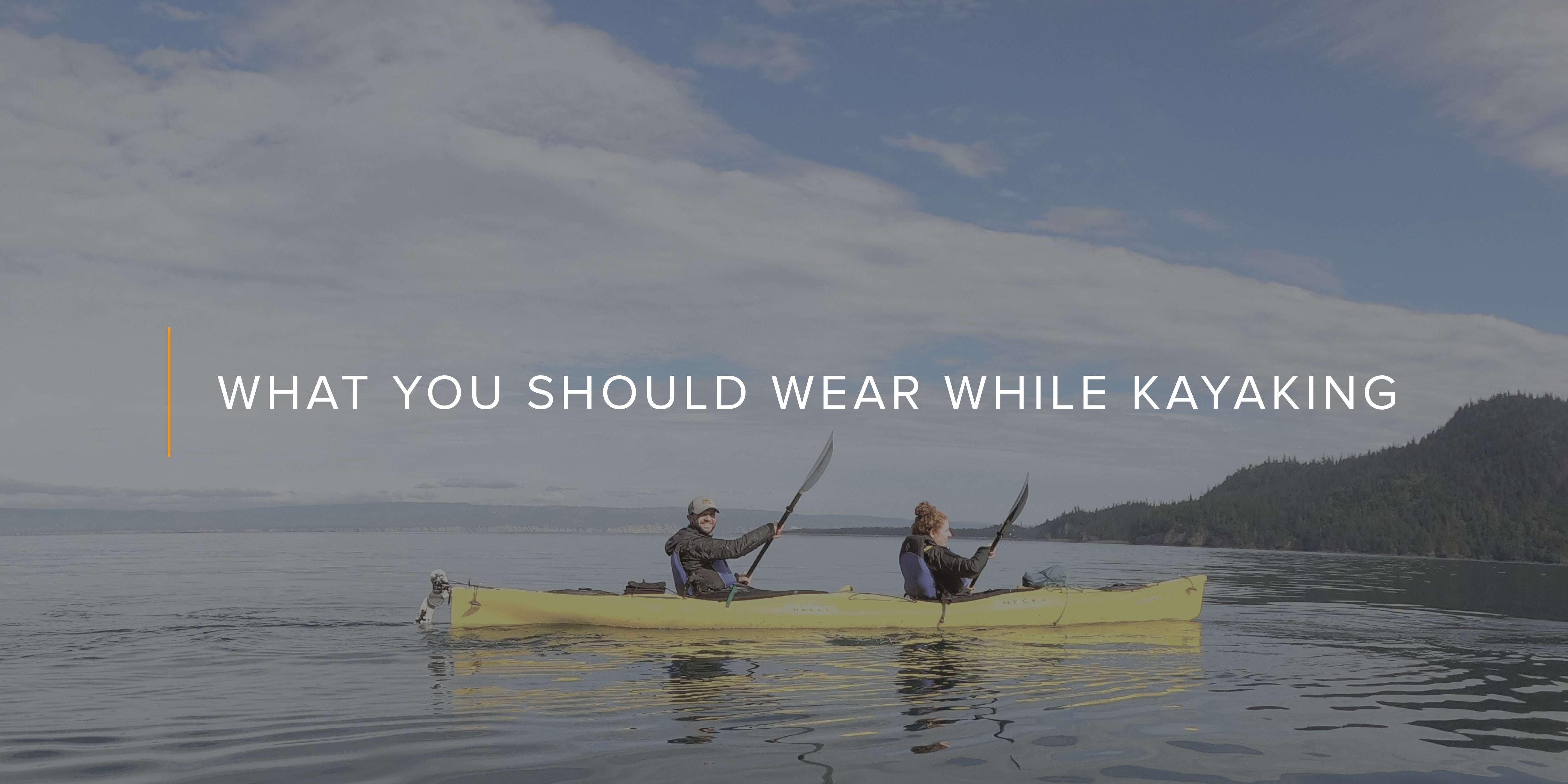What You Should Wear While Kayaking
There’s something invigorating and relaxing about spending a day on the water in a kayak.
Kayaking is a popular recreational sport enjoyed by millions of people every year. There are tons of benefits to kayaking, both physical and mental. A day on the water in your kayak is a good day.
If you are new to kayaking, you’re gonna love it. You’ll need a good packing list of what to wear before you go.
So, if this is your first adventure in a Kayak, here’s a quick list of head-to-toe gear.

Safety Gear
Best to be prepared. Being out on the water can be fun, but there is a certain level of inherent danger every kayaker takes on when they slip their kayak in the water.
Protect your head. All kayakers need head protection. Get a helmet fit for water sports. Many streams and rivers have large rocks just underneath the surface, not to mention tree branches hanging over the water. Protect your noggin with a good helmet.
Flotation device. You should wear a properly fitted personal floatation device any time you go kayaking (or get in any boat) to protect yourself from drowning. You might say, but I’m a good swimmer. That may be true, but many strong swimmers have run into trouble on the water. What if you hit your head? What if you get caught in a thicket among branches? What if your kayak flips over? It is wise to prepare in advance for all possibilities.
Gloves. Kayaking involves a lot of paddling, so come prepared with a good set of water-proof gloves. They will help protect you from blisters, splinters, and cuts. Check with the people who know your destination best. You can’t go wrong protecting your hands in a foreign environment.
Reflective tape. If you happen to be kayaking at night, you’ll need additional gear. You should have reflective tape attached to both sides of your kayak, the front and back of your lifejacket, as well as on the back of the paddle blades.
Air horn. In case of emergency, you’ll need a loud warning device of some kind. The most common in the boating community is an air horn. You can find them online or at a local boat shop. If you get lost, stuck, or injured, a loud air horn will help others find you.
Sunscreen. Sunscreen that’s formulated for water use is a must. Water’s reflective nature can result in some sunburns that are even nastier than they would be otherwise. It’s always a good idea to protect yourself from the sun when you’re out on the water.
Sunglasses. Take steps to protect your eyes and the delicate skin surrounding them from the glare on the water by wearing a good quality pair of sunglasses too. Make sure you use a strap of some kind so they don’t fall off into the water.

Clothing
You’ll be doing a fair bit of moving around while kayaking. As such, clothing that allows you to move freely is a must.
You don’t want to have anything preventing you from twisting your torso or moving your arms through their range of motion.
Avoid the extremes. On the one hand you may not want to only wear a swimsuit, and on the other hand you should also avoid wearing bulky coats.
If you do wear a swimsuit, you should at least wear a rashguard with it. Ahem. You don’t want your lifejacket to rub your skin raw.
Opt for layers that are comfortable and not restrictive in any way.
Wetsuit or Drysuit
One of the first rules of kayaking is to dress for the water, not the weather.
There’s an excellent chance that you will get wet, which is why it’s important to make sure that your clothing will help you hold up against the water’s chill.
Generally speaking, if the combined temperature of the water and air is less than 120 degrees Fahrenheit, you should wear a wetsuit or drysuit.
A dry suit can be worn as your top layer, while a wetsuit should be worn as your bottom layer.
Synthetic Fabric
For a day on the water, it’s best to wear synthetic fabrics.
These fabrics hold up way better to water than cotton. Cotton tends to soak up water and takes a relatively long time to dry.
Wearing layers made of synthetic fabrics allows you to remove layers as needed and make it easier to stay warm and dry.
Opt for a moisture-wicking first layer, an insulating layer, and a warm, thin top layer.
Shoes
Protect your feet. Many people prefer to kayak without shoes. Shoes are not required, however, there are many modern sporting shoes built for the water available on the market today. There are many coll varieties made for men and women.
Look for a lightweight set of shoes, made of water resistant material. Many water shoes come with drainage holes and flexible rubber soles. The shoes should be breathable and quick drying, perfect for kayaking and all other water sports.
You’ll feel almost barefoot.
Avoid wearing your everyday shoes, like tennis shoes, loafers, or hiking boots.
If the weather is cold, go with neoprene paddling booties. If the weather is hot, go with water shoes or sandals with thick rubber soles and back straps that will dry quickly. Whatever the weather, keep your feet together.
A Great Day Kayaking
If you’re looking for a great way to explore the great outdoors and have some fun in the water, kayaking is a great choice.
Kayaking is fairly easy to pick up and puts you in the driver’s seat.
And when you are comfortable and wearing the right gear, you can paddle your way down the river with confidence.
Kayaking is a ton of fun and a peaceful way to spend the afternoon in the middle of nature.
